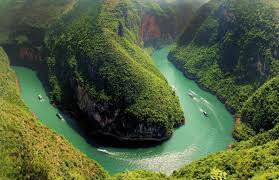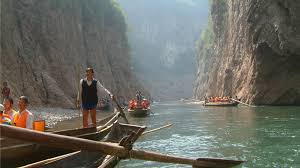Yangtze River: Untold Secrets of Asia’s Most Majestic Waterway
“Yangtze”
Yangtze River: Untold Secrets of Asia’s Most Majestic Waterway
The Yangtze River is not just a body of water – it’s a lifeline, a storyteller, and a witness to thousands of years of Chinese history. Stretching over 6,300 kilometers (3,917 miles), it is the longest river in Asia and the third longest in the world. From its icy origins in the Tibetan Plateau to its grand entrance into the East China Sea, the Yangtze is a natural marvel that has shaped civilizations, powered economies, and inspired countless legends.
In this article, we’ll uncover hidden facts, jaw-dropping landscapes, and surprising economic truths about the Yangtze – and why it’s one of the most valuable waterways on Earth.

1. Where the Yangtze Begins: The Roof of the World
The Yangtze starts its journey high up in the Tibetan Plateau, often called the “Roof of the World.” Its official source is the Geladandong Glacier, a place so remote that only the most adventurous explorers dare to visit. Here, crystal-clear snowmelt begins a journey that will eventually meet bustling cities, ancient temples, and fertile farmlands.
2. A River Older Than History
Civilizations along the Yangtze date back more than 5,000 years. Archaeologists have found evidence of early farming settlements along its banks, making it a cradle of ancient Chinese culture. Dynasties relied on it for transportation, food supply, and even defense. It’s no exaggeration to say that without the Yangtze, China’s history would be completely different.
3. The Economic Powerhouse of China
Today, the Yangtze River Basin is home to over 400 million people — more than the entire population of the United States. It contributes to nearly 40% of China’s GDP, making it an economic superpower in itself. Major industrial cities like Shanghai, Wuhan, and Chongqing thrive on its banks, serving as hubs for manufacturing, shipping, and trade.
In fact, the Yangtze River Delta is one of the world’s largest economic regions, attracting massive foreign investments every year.
4. The Three Gorges Dam: A Modern Marvel
You can’t talk about the Yangtze without mentioning the Three Gorges Dam — the world’s largest hydroelectric power station. This engineering giant produces enough electricity to power over 60 million homes and plays a major role in controlling floods, improving navigation, and providing renewable energy.
However, the dam has also sparked debates over environmental impacts and cultural heritage loss, as entire towns and archaeological sites were submerged during its construction.
5. A Paradise for Nature Lovers
The Yangtze is a treasure chest of biodiversity. Its waters and surrounding wetlands are home to rare species like the Yangtze River dolphin (baiji), Chinese alligator, and giant salamander. While some of these species are critically endangered, conservation efforts continue to protect them.
The river’s upper reaches, surrounded by snow-capped mountains, provide breathtaking landscapes, while its middle and lower stretches offer lush farmlands and vibrant cities.
6. Cultural Legends and Myths
Ancient Chinese literature is filled with poems, songs, and legends about the Yangtze. One famous tale tells of the White Snake, a beautiful woman transformed from a magical serpent who falls in love with a human — a story that unfolds along the riverbanks. For many locals, the Yangtze isn’t just water; it’s a symbol of life, love, and resilience.

7. The Yangtze’s Role in Global Trade
The Yangtze River is also a key link in the Belt and Road Initiative, China’s massive global trade network. Its ports handle over 2 billion tons of cargo annually, making it one of the busiest inland waterways in the world. From electronics to agricultural products, goods from deep inland China travel down the Yangtze to reach global markets.
8. A Travel Experience Like No Other
Cruising down the Yangtze is one of the most spectacular ways to explore China. Visitors can witness the dramatic cliffs of the Three Gorges, ancient cliffside carvings, and peaceful riverside villages. Popular starting points for Yangtze cruises include Chongqing and Yichang, offering a blend of modern city life and ancient charm.
9. Climate Change and the Yangtze’s Future
Like many great rivers, the Yangtze faces challenges from climate change, pollution, and overuse. In recent years, severe droughts and floods have impacted the river’s flow, affecting agriculture and transportation. The Chinese government has launched multiple environmental restoration programs, but the battle to preserve the Yangtze’s health is ongoing.
10. Why the Yangtze Matters to the World
The Yangtze isn’t just China’s river – it’s a global resource. Its economic output, renewable energy, and biodiversity contribute to the planet’s health and stability. Understanding and protecting it is a responsibility that extends beyond borders.
Final Thoughts
The Yangtze River is more than a geographical feature; it’s a living, breathing force that has shaped history, powered economies, and inspired generations. Whether you see it as an ecological wonder, a cultural treasure, or an economic engine, the Yangtze stands as one of humanity’s most important natural assets.
So next time you hear the name “Yangtze,” remember — it’s not just a river. It’s the heartbeat of a nation, and its story is far from over.
SEO Keywords Included Naturally: Yangtze River, Three Gorges Dam, Yangtze River facts, Yangtze River cruise, Yangtze biodiversity, Yangtze economy, longest river in Asia.
